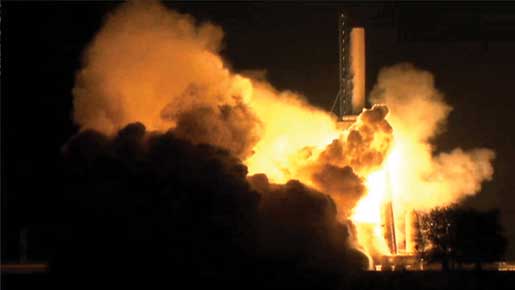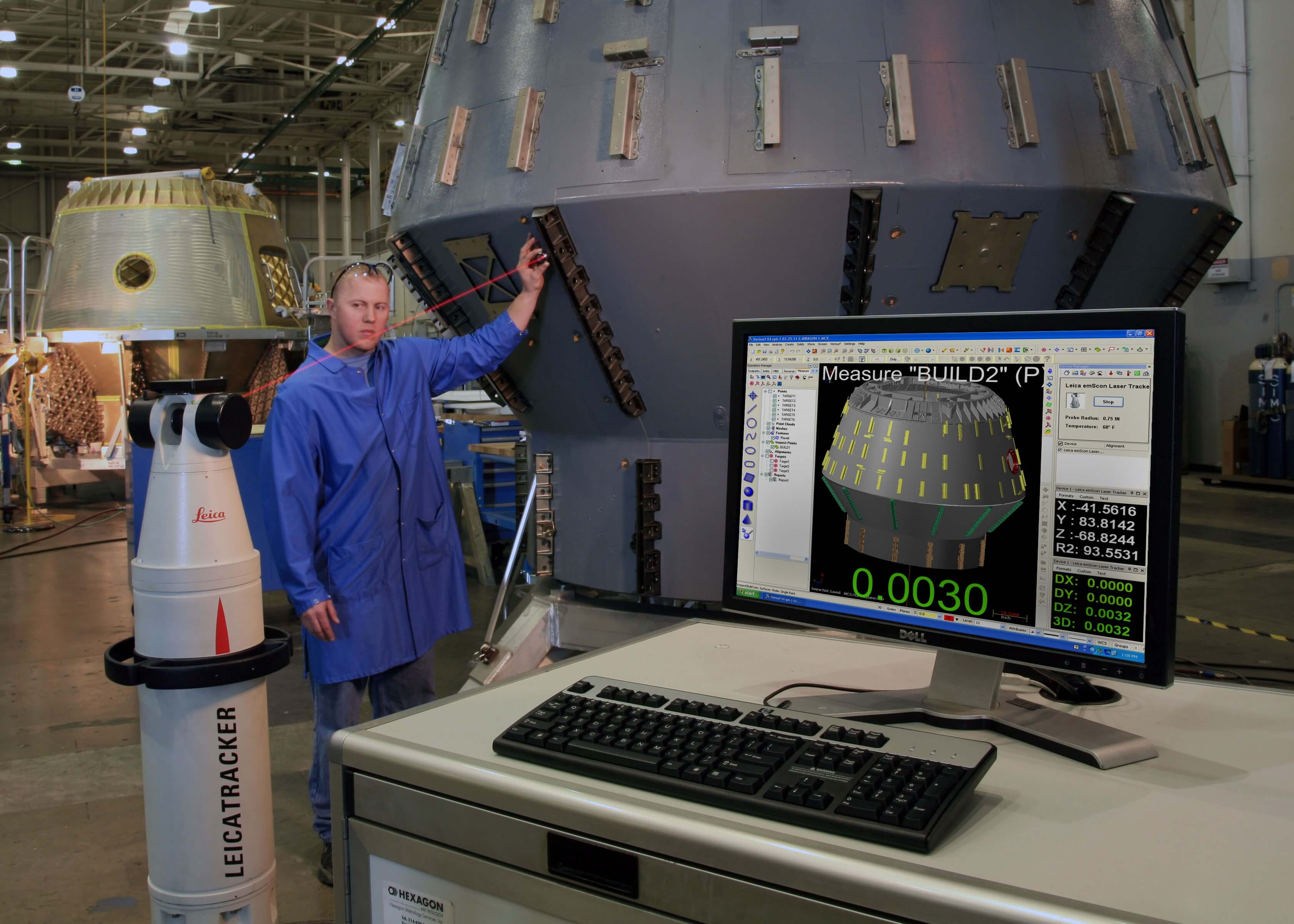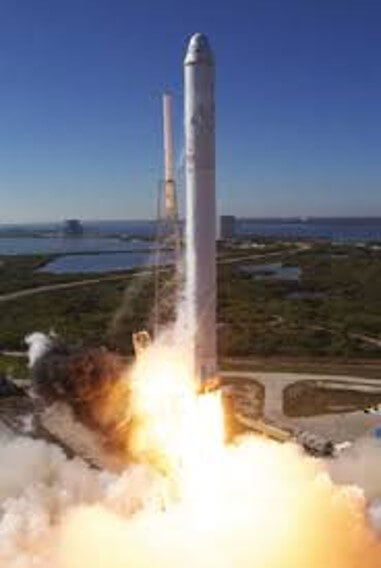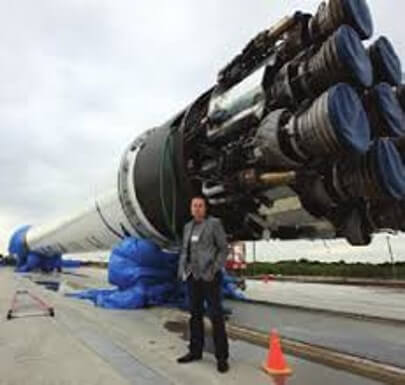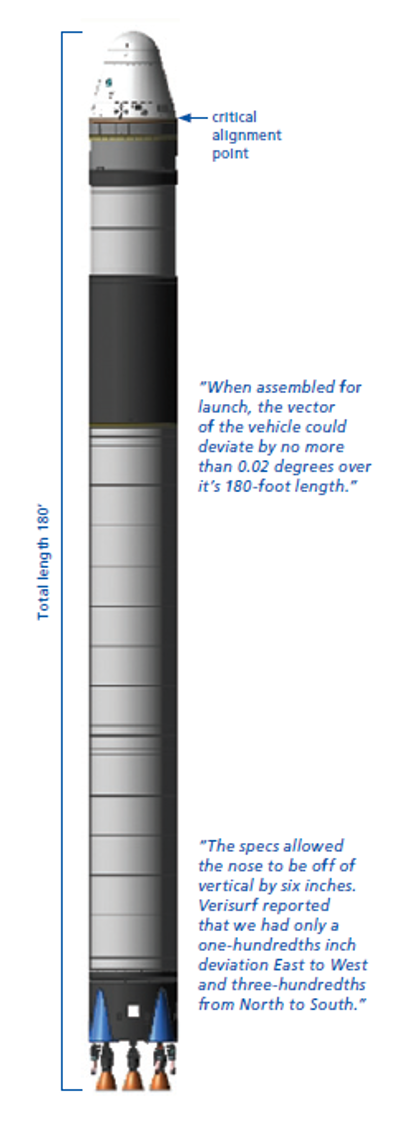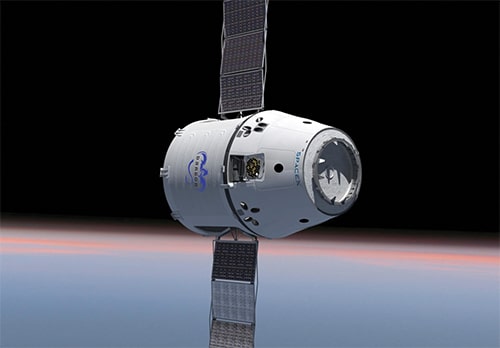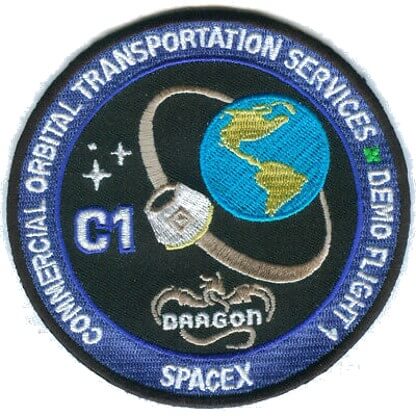SpaceX Demands Precise Positioning
Earth orbit space exploration is on the way to becoming a commercial activity where precision portable measurement is a critical enabling technology.
Earth orbit space exploration is on the way to becoming a commercial activity where precision portable measurement is a critical enabling technology.
Falcon 9 lifts off from SLC-40 for first test flight of Dragon spacecraft.
SpaceX founder and CEO, Elon Musk, with Falcon 9 at Cape Canaveral AFS.
Verisurf’s CAD-Based Inspection software measures SpaceX parts and assemblies in real time and compares them to the nominal dimensions and tolerances that are read from a design engineer’s CAD model. The process eliminates the need for fully documented engineering drawings and manual programming, which decreases inspection time and increases data accuracy.
Artist rendering of Dragon, with solar panels extending, in orbit.
Read this story in Quality Manufacturing Today Magazine HERE
Get the PDF version of this story HERE
Watch the video version of this story below:
With the retrieval of Dragon from the Pacific Ocean, Space Exploration Technologies (SpaceX) became the first commercial company to launch and recover a spacecraft from low-Earth orbit. Placed into space atop the company’s Falcon 9 launch vehicle, Dragon completed two orbits with speeds topping 17,000 miles per hour. After its three-hour, fifty-thousand-mile flight, Dragon splashed down just one mile from the center of its targeted landing zone.
This is the first of three test flights under NASA’s Commercial Orbital Transportation Services (COTS) program. Following two more test flights, Dragon will be delivering payload to the International Space Station, which the company plans to initiate by the end of 2011. For these future missions, SpaceX’s will again turn to its portable CMM (PCMM) systems to maintain the precision it achieved when first launching and returning Dragon from orbit.
SpaceX is a different kind of company, in part due to its founder and CEO, Elon Musk, who was the co-founder of PayPal and is the CEO of Tesla Motors. In a post-flight press conference, Musk said, “The reason I’m doing SpaceX is that I just happen to have a very strong passion for space, and I want us to become a true spacefaring civilization and even a multi-planetary civilization.” He concluded, “That is my goal for SpaceX.”
To make his goal a reality, SpaceX intends to change 40-year-old paradigms with a family of launch vehicles and spacecraft that increase reliability and performance while ultimately reducing costs by a factor of ten. The underlying philosophy is a focus on simplicity to both increase reliability and lower cost for vehicle development and launch services.
According to Larry Mosse, SpaceX’s tooling operations manager, the company counts on its PCMMs to deliver this reliability and cost reduction. And it counts on Verisurf metrology software to drive all these devices in a powerful yet simple way. He said, “Verisurf metrology software is doing its part in maintaining precision in the shop and on the launch pad. We use it for everything from tooling fabrication to pre-launch preparation.”
Falcon 9 lifted off from Cape Canaveral AFS launch pad SLC-40 at 10:43 am EST on December 8, 2010. At 10:46, the first stage separated. At 10:52, Dragon entered low- Earth orbit. At 2:00 pm, Dragon splashed down. At every point in this mission, the launch vehicle and spacecraft hit their marks precisely. According to the company, Falcon 9 delivered Dragon to orbit with “near bull’s-eye insertion,” and Dragon then splashed down in the center of its targeted landing zone.
The accuracy of the flight path required careful alignment of Falcon 9’s sections and precise launch vector positioning. So, the SpaceX crew used its PCMM metrology systems, which included laser trackers and Verisurf software.
Falcon 9 is 180 feet tall and has a 12-foot diameter. Nine of SpaceX’s Merlin engines power the first stage; the second stage uses one. Final assembly of this amazing piece of engineering is completed at the launch site. To position and align Falcon 9’s components, SpaceX used laser trackers and Verisurf’s BUILD application, which is a virtual gage. The trackers fed measurement data directly to Verisurf, which reported, in real time, the accuracy of each section relative to the CAD model used in design and manufacturing.
After assembly, the SpaceX crew raised Falcon 9 into its vertical launch position. To follow its intended flight path, launch specifications allowed the vector of the vehicle to deviate by only 0.02 degrees over the 180-foot length. Mosse said that they again turned to the PCMMs and Verisurf Software to confirm a “ready-to-launch” status. “The specs allowed the nose to be off of vertical by six inches. Verisurf reported that we had only one-hundredth of an inch deviation East to West and three-hundredths from North to South,” he said. “And from the ground up, all sections were at their nominal positions.”
Mosse noted that this alignment accuracy was possible because of the controls used in manufacturing and assembly operations at the company’s Hawthorne, California, facility. He cited one example, “We have a set of five fixtures that are used to position rocket components and drill a pattern of 144 holes. These holes dictate the alignment of Falcon 9’s sections.” As he did in pre-flight preparation, Mosse used Verisurf to place the fixtures before committing to the drilling operations.
“With Verisurf, we are looking directly at the CAD model and the measurement results,” Mosse stated. “We see the measurements reflected against the 3D model. This makes the process faster and reduces mistakes.” He noted that before Verisurf his team had to interpret page-after-page of 2D drawing dimensions. “We had to rely on people’s ability to visualize 3D measurements from 2D drawings which results in interpretation problems,” he said.
Before assembly, Mosse used his Verisurf solution to measure parts and tooling during fabrication and manufacturing. For example, SpaceX will drive both laser trackers and articulating arms with Verisurf when measuring composite tooling or weld fixtures. Mosse said, “We inspect these items to the CAD data. In many cases, we will inspect to profile tolerances only.” He continued, “We aren’t drawing free, yet, but like the rest of the aerospace industry we are striving to implement model-based definition to achieve its many benefits.”
For SpaceX the most important benefit is time. Model-based definitions (MBD) with profile tolerances eliminate the time to document an engineering drawing; reduce the time to create inspection plans and reports; and accelerate identification and resolution of manufacturing issues. With an aggressive schedule and a 25-launch manifest over the next four years, including 12 space station deliveries, every moment counts.
SpaceX’s philosophy for its launch into space is simplicity that yields reliability and savings. To achieve this, it counts on Verisurf. Mosse said, “With Verisurf, we have very quick assurance that we are in the proper 3D space.” This, in turn, puts Falcon 9’s launch and Dragon’s orbit in their proper position in space.
##
Verisurf Software, Inc.
Verisurf Software, Inc. is an advanced three-dimensional measurement solutions company committed to delivering advanced computer-aided inspection and reverse engineering solutions. Verisurf software helps manufacturers of all sizes and industries produce higher quality products in less time and at a lower cost with automated, Model-Based Inspection processes. For more information, visit the Verisurf website at https://verisurf.com.

